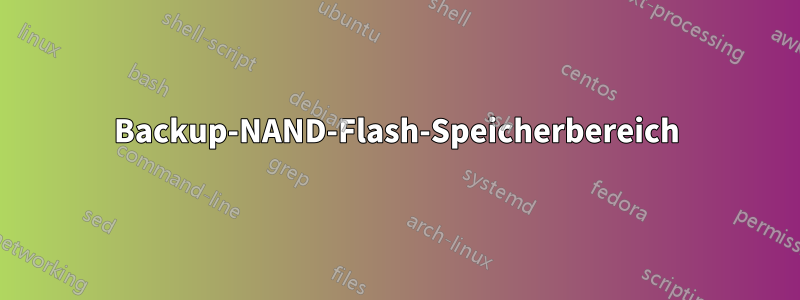
Eingebettetes Linux-System in der Version 2.6.26.5 an Bord. Das Gerät verwendet den vollständigen Image-Kernel. Das Dateisystem ist im NAND-Flash-Speicher gespeichert, Hynix NAND 32 MiB 3,3 V 8-Bit.
# printenv
baudrate=115200
ethaddr=FF:FF:FF:FF:FF:FF
netmask=255.255.255.0
ipaddr=192.168.1.1
serverip=192.168.1.100
bootfile=firetux.kernel
bootcmd1=setenv bootargs ${bootargs} && nboot 0x20200000 0 ${image_addr} && bootm 0x20200000
bootcmd2=setenv bootargs ${bootargs} && tftpboot 20200000 firetux.kernel && bootm 20200000
phymode=auto
mtdids=nand0=gen_nand
unlock=yes
verify=y
update.uboot=echo Update u-boot && tftpboot 0x20000000 nandboot.flash && nand erase 0x0 0x03ffff && nand write.jffs2 0x20000000 0x0 ${filesize}
update.kernel=echo Update kernel && tftpboot 0x20000000 uImage && nand erase 0x80000 0x180000 && nand write.jffs2 20000000 0x80000 0x180000
update.romimg=echo Update RomImage && tftpboot 0x20000000 romimage.img && nand erase 0x80000 0x13e0000&& nand write.jffs2 20000000 0x80000 ${filesize}
update.halfimg=echo Update HalfImage && tftpboot 0x20000000 recovery.img && nand erase 0x1460000 0x700000&& nand write.jffs2 20000000 0x1460000 ${filesize}
eraseenv=echo Erase Environment && nand erase 0x60000 0x20000
HwModel=Hw_Model=NXPi02
bootcmd=run bootcmd1
halfImage=half_image=0
cy_boot_code_ver=1.0.1 (Oct 6 2011 - 20:04:00)
RouterMode=Router_Mode=0
stdin=serial
stdout=serial
stderr=serial
bootcmd=run bootcmd1
image_addr=0x80000
bootargs=console=ttyS1,115200n8 rootfstype=squashfs noalign half_image=0 verify=y Hw_Model=NXPi02 Router_Mode=0
ethact=ETN1
bootdelay=3
Einige Bereiche des NAND-Speichers (NVRAM) müssen von U-Boot gesichert werden. Verbindung zur Platine erfolgt über serielle Schnittstelle (UART). Netzwerkverbindung ist nicht verfügbar. U-Boot bietet bestimmte Optionen zur Verwaltung des NAND-Speichers:
# help nand
nand info - show available NAND devices
nand device [dev] - show or set current device
nand read - addr off|partition size
nand write - addr off|partition size
read/write 'size' bytes starting at offset 'off'
to/from memory address 'addr', skipping bad blocks.
nand erase [clean] [off size] - erase 'size' bytes from
offset 'off' (entire device if not specified)
nand bad - show bad blocks
nand dump[.oob] off - dump page
nand scrub - really clean NAND erasing bad blocks (UNSAFE)
nand markbad off - mark bad block at offset (UNSAFE)
nand biterr off - make a bit error at offset (UNSAFE)
Insbesondere,nand dump[.oob] off - dump page
Was ist NANDOffset-Adressedafür? Es wurde keine Partitionsgröße zum Dumpen angegeben. Ich muss den gesamten NVRAM dumpen.
Nachdem das Gerät das Kernel-Image geladen hat, werden 11 MTD-Partitionen erstellt:
Creating 11 MTD partitions on "gen_nand":
0x00000000-0x00060000 : "u-boot"
0x00060000-0x00080000 : "u-bootenv"
0x00080000-0x01460000 : "ROMIMAGE"
0x01460000-0x01b60000 : "HALFIMAGE"
0x00200000-0x01460000 : "LINUX_ROOTFS"
0x01b60000-0x01d60000 : "HS_FW"
0x01d60000-0x01e60000 : "FPAR"
0x01e60000-0x01ee0000 : "SNOM"
0x01ee0000-0x01f00000 : "EEPROM"
0x01f00000-0x01f80000 : "NVRAM"
0x01f80000-0x02000000 : "CA_DATA"
Ist die 0x01f00000NVRAM-Offset-Adresse? Wie groß ist NVRAM? Ist es 0x80000? U-Boot hat auch einen Befehl md - memory display.
=> help md
md - memory display
Usage:
md [.b, .w, .l] address [# of objects]
=>
Ich habe versucht, md.b 0x01f00000 0x80000den NVRAM mithilfe eines Befehls auf dem Terminal anzuzeigen, aber es wird nichts ausgegeben und das Terminal hängt sich auf.
EDIT: [eine Ergänzung]
# nand info
Device 0: NAND 32MiB 3,3V 8-bit, sector size 16 KiB
# nand device nand0
Device 0: NAND 32MiB 3,3V 8-bit... is now current device
# nand read 0x20000000 NVRAM
NAND read: mtdparts variable not set, see 'help mtdparts'
incorrect device type in NVRAM
'NVRAM' is not a number
# nand read 0x20000000 0x01f00000 0x00080000
NAND read: device 0 offset 0x1f00000, size 0x80000
524288 bytes read: OK
BusyBox v1.10.2 (2015-09-06 10:58:05 CST) built-in shell (ash)
Enter 'help' for a list of built-in commands.
/bin/sh: can't access tty; job control turned off
# help
Built-in commands:
-------------------
. : [ [[ alias bg break cd chdir continue echo eval exec exit
export false fg hash help jobs let local pwd read readonly return
set shift source test times trap true type ulimit umask unalias
unset wait
# ext4write LINUX_ROOTFS /NVRAM.img 0x20000000 0x00080000
/bin/sh: ext4write: not found
Antwort1
Sie sollten bei der Verwendung von Befehlen vorsichtiger sein. Der Befehl md zeigt Ihnen den Speicher an dieser Stelle. Wenn Sie md.b verwenden, wird die Ausgabe in Bytes vorgenommen, was Ihr TTY zweifellos verwirrt. Ihr Befehl lautet im Wesentlichen: „Sende mir alle Bytes im Speicher von 0x01f00000 bis 0x01f00000 + 0x80000 über die Leitung.“ Außerdem macht nand dumb nicht das, was Sie denken.
Geräte abrufen
nand info
Richten Sie Ihr Gerät ein
nand device nand0
Verwenden Sie einfach den Namen der Partition
nand read 0x20000000 NVRAM 0x00080000
Um deutlich zu machen, was dies bewirkt: 524288 (0x00080000 in Hex) Bytes werden aus dem NVRAM der Partition in den Speicherort 0x20000000 gelesen. Sie können die Größe auch einfach weglassen, wenn Sie die gesamte Partition möchten.
nand read 0x20000000 NVRAM
Jetzt müssen Sie den NVRAM im Speicher irgendwo hinschreiben. Nehmen wir an, in ein ext4-Dateisystem.
ext4write LINUX_ROOTFS /NVRAM.img 0x20000000 0x00080000


